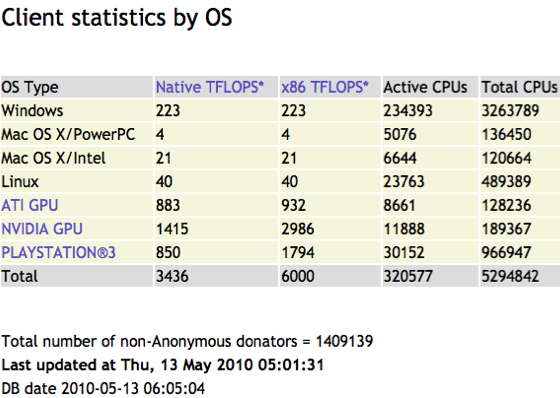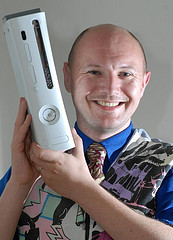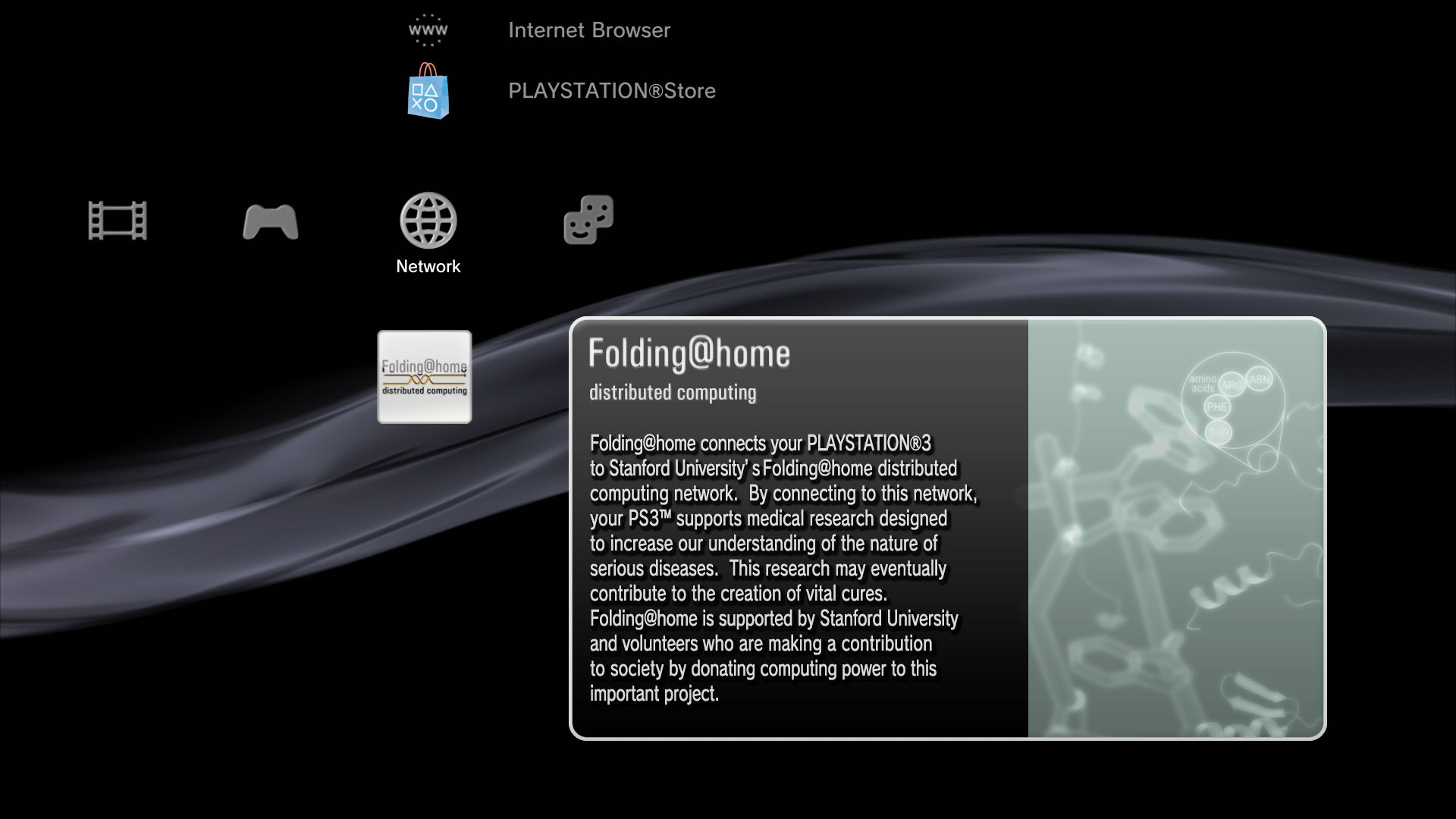Do not always think that gaming consoles such as Sony’s Playstation 3, Microsoft’s Xbox 360 and Nintendo’s Wii are for gaming. These popular gaming consoles can actually do more than just for entertainment. For example, the United States Air Force and Stanford University researchers harness these gaming consoles as a supercomputer for research purposes. Federal investigators use them to catch real life while for most PS3 users, the criminals they catch and the victims they save are just pixilated simulations on a TV screen. United Kingdom’s NHS (National Health Service) promotes the use of Nintendo Wii to keep fit.
Military
PS3

In November 2009, the United States Air Force Research Laboratory’s information directorate in Rome, New York added 2,200 PS3 consoles to its already existing 336 systems. Unfortunately for the military pilots, the gaming systems aren’t for them to play during their leisure time. Instead, the PS3s are used to perform an altruistic task — to built a legitimately powerful CPU or also known as a supercomputer, all thanks to its eight-processor Cell processors.
The previous cluster deployed by the Air Force was already used to research projects like Neuromorphic Computing, High Definition Video image processing and Back Projection Synthetic Aperture Radar Imager formation. The expanded network focuses on the study of various software applications which are specific to the PS3’s Cell Broadband Engine processor architecture, including Advanced Computing Architectures and High Performance Embedded Computing, according to the military requisition form.
You might wonder why the folks over at the U.S. Air Force make use of the Cell processors in the PS3 to build supercomputers. Well, the reason is simple. There are much cheaper and faster than multicore Xeon processors, which were used by the Air Force in the past.
“With respect to cell processors, a single 1U server configured with two 3.2GHz cell processors can cost up to $8K while two Sony PS3s cost approximately $600,” the form states.
“Though a single 3.2 GHz cell processor can deliver over 200 gigaflops, whereas the Sony PS3 configuration delivers approximately 150 gigaflops, the approximately tenfold cost difference per gigaflops makes the Sony PS3 the only viable technology for [high performance computing] applications.” With this, the list of things that the PS3 can do gets another check mark.
Health
PS3
Since 2005, Sony has been collaborating with researchers of Stanford University’s Folding@home program to provide equipments to help better understand a process called protein folding and its relationship to several serious diseases. In 2007, owners of Internet-connected PS3 were asked to lend their console’s massive processing power to the effort, much as PC users are able to assist in the SETI@Home project, which is seeking to identify extraterrestrial life.
Studying the process of how two-dimensional protein strands in the human body fold into the three-dimensional molecules that determine their biological functions, and why incorrect folding can lead to debilitating diseases, is an extremely arduous and complex task and requires vast amounts of computing power. The Cell/B.E. processor inside each PS3 is roughly 10 times faster than a standard mainstream chip inside a personal computer (PC), so researchers are able to perform the simulations much faster, speeding up the research process. As a result, the PS3/Folding@home initiative taps into users’ devices’ unused processing power, and nearly one million of PS3 CPUs are used till date.
“Millions of users have experienced the power of PS3 entertainment. Now they can utilize that exceptional computing power to help fight diseases,” said Masayuki Chatani, Corporate Executive and CTO Computer, Sony Computer Entertainment Inc. “In order to study protein folding, researchers need more than just one super computer, but the massive processing power of thousands of networked computers. Previously, PCs have been the only option for scientists, but now, they have a new, more powerful tool — PS3.”

Xbox 360
 A team of British researchers at the University of Warick have found a new and interesting way of making use one of the world’s most popular gaming consoles to fight against heart disease. By using the “parallel processing” function, scientists are able to gain control of spare computing power even in the meantime gamers are indulging in their Xbox 360 games. Researchers believe the powerful graphics chip inside the Microsoft games console is ten times cheaper and five times faster than other forms of parallel processing hardware used to predict heart attacks.
A team of British researchers at the University of Warick have found a new and interesting way of making use one of the world’s most popular gaming consoles to fight against heart disease. By using the “parallel processing” function, scientists are able to gain control of spare computing power even in the meantime gamers are indulging in their Xbox 360 games. Researchers believe the powerful graphics chip inside the Microsoft games console is ten times cheaper and five times faster than other forms of parallel processing hardware used to predict heart attacks.
Experts at the University of Warwick claim the Xbox-powered models could save more lives because the console’s power shortens the simulation to ‘minutes’ rather than hours, at a fraction of the price. The PC network of up to 12 machines used currently to make the same model costs at least £2,000 for just one high-end PC, while XBox consoles can now be snapped up for less than £200 on the high street.
“This is a highly effective way of carrying out high end parallel computing on ‘domestic’ hardware for cardiac simulations,” said Dr Simon Scarle in the University of Warwick’s WMG Digital Laboratory. “Although major reworking of any previous code framework is required, the Xbox 360 is a very easy platform to develop for and this cost can easily be outweighed by the benefits in gained computational power and speed, as well as the relative ease of visualization of the system.”
However, there are some downsides with his research. It is impossible to predict the rise of certain dangerous arrhythmias, as he has shown that cardiac cell models are affected by a specific limitation of computational systems known as the Halting Problem.
Wii

I always have this mentality — video games will harm our brains, and adversely affect our health. But my negative perception of games has changed when I stumbled across the ‘surprising’ news of National Health System (UK) endorsing the popular Nintendo Wii Fit Plus. According to a report published by UK’s InTheNews, the Japanese game console Nintendo Wii Fit Plus has won permission to use the NHS’s Change4Life logo in its advertising on television and in shops, despite critics and accusations that it shouldn’t play a role in the obesity epidemic.
However, a spokesman for the Department for Health argues that it was not endorsing a video game, but rather an exercise. Active video games, where kids need to jump up and down or dance about as part of the game, are a great way to get kids moving,” he said.
The Change4Life programme is a public health programme in the United Kingdom which began in January 2009, organised by the Department of Health. The campaign aims to encourage people in Britain to lead healthier lives, using the slogan “eat well, move more, live longer”.
Nintendo’s Wii Fit is believed to have been the first video game to be ‘endorsed’ by the Department of Health (DoH), and features over 60 exercises.
Wii Fit Plus is the enhanced version of the top-selling game offers a range of new features, along with new exercises, yoga activities and balance games designed to keep workouts fun. For the first time, users can customize their workouts to target specific areas of their bodies or to fill specific intervals of time.
Solving Crimes
PS3

The PS3, among all the other things it can do, can convict criminals. The way in itself is a pretty odd one, but a very nice workaround with a home-baked solution that ends up as a cost-effective result. Federal officers are using the gaming console to catch predators in real life.
“Bad guys are encrypting their stuff now, so we need a methodology of hacking on that to try to break passwords,” said Claude E. Davenport, a senior special agent at the U.S. Immigration and Customs Enforcement Cyber Crimes Center, known as C3. “The PlayStation 3 — its processing component — is perfect for large-scale library attacks.”
“Normally, if you’re going to try to break a password, you’re going to have to go through all the permutations of a password,” said Douglas Skinner, ICE computer forensic agent.
He explained that the number of possible combinations in a six-digit password is 256 to the sixth power. In other words: 281,474,976,710,656 possibilities — that’s nearly 282 trillion. The networked PS3s are able to process 4 million passwords per second, thus reducing the time needed to find the correct combination. Besides that, the PS3 is also much cheaper. Comes with a price tag of only $300, the PS3 is $8,000 cheaper than the Tableau/Dell server combination the agents were using before.
